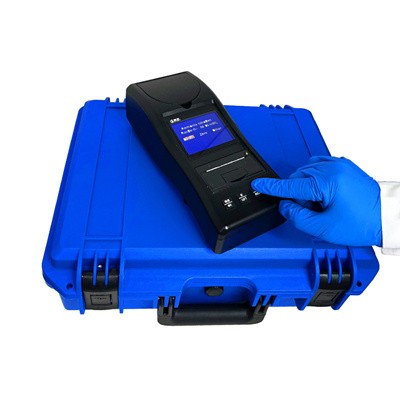
NAME:Portable ammonia nitrogen water quality analyzer
MOdel:GA-SCAN
BRAND:Guanao
MOdel:GA-SCAN
BRAND:Guanao
- presentation
- parameters
- feature
Portable ammonia nitrogen water quality analyzer is single fixed wavelength spectrophotometer, which adopt the principle of spectrophotometry to measure the parameters. In the instrument, the linear curves of the concentration of different parameters and the absorbance were established, and the concentration of the water samples was obtained through the identification of the color. It can be used to test the parameters ammonia, nitrite, nitrate of water, the instrument can be customized and the user can customize the required metal parameters according to the requirements.
What is ammonia nitrogen
If you want to know what ammonia nitrogen is, you should first figure out what is nitrogen and what is ammonia.
Nitrogen is a very extensive element in the natural environment. The nitrogen content in the air is 70-80%. Its chemical properties are very inactive, generally only slightly soluble in water and alcohol. Nitrogen is an essential nutrient for all plants and animals to synthesize amino acids. In daily life, nitrogen is non-toxic when it exists in the form of simple substance (nitrogen), but it is toxic if it appears in the form of compound.
Ammonia is an inorganic compound with the chemical formula of NH3. It is produced by the combination of nitrogen and hydrogen. It is colorless and has a strong pungent smell. It has a high solubility in water and will react with water to form weak base. As one of the most mass-produced inorganic compounds in the world, it is widely used. Ammonia mainly exists in water in the form of free ammonia and ammonium ion. According to research, free ammonia is the main cause of biological poisoning in water. When the content of free ammonia in the water is high enough, the organisms in the water can not timely remove the toxic substances in the body, resulting in the accumulation of toxic substances in internal tissues and blood, resulting in death.
Ammonia nitrogen mainly refers to the measurement of ammonia content in the water sample to be measured, and the unit of measurement is mg / L. It also refers to all forms of ammonia. For example, ammonia (NH3), ammonium (NH4 +), nitrogen (N2), nitrate (NO3 -), nitrite (NO2 -), etc.
- 1.small and beautiful, easy to carry, work stable,a high performance-price ratio
2. Microcomputer system configuration, touch keyboard, LCD crystal clear display.
3. This instrument adopts the photoelectric colorimetric principle of spectrophotometry, which is simple to operate. The sample is put into the reagent for a few minutes to read, and the repeatability error is less than or equal to plus or minus 2%.
4. The instrument adopts high strength long life light source and the light source is stable.
5. The main engine is equipped with a large power battery, which can be used for quantitative measurement in the field, and can work for 6 hours continuously.
6. The calibration curves within the range of the instrument are stored in the instrument, with the protection of power failure, the calibration data will not be lost.
7. Power supply mode: 220V, 50HZ;Dimensions (mm) : 250 x 145 x 60;Weight (kg) : 1.0.



